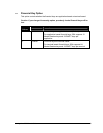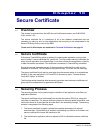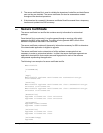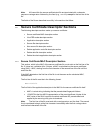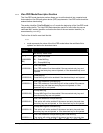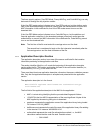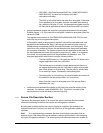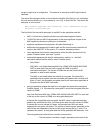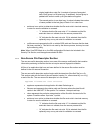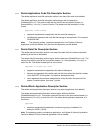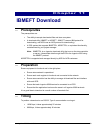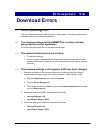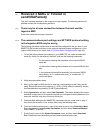
Ingenico 6500 User’s Guide 107
original application code file. It consists of groups of encrypted
data. Each group is of 8 bytes long. If necessary, the last group is
padded with zeros to make up 8 bytes before encryption.
— The second portion is one byte long. Its value indicates the number
of zeros padded to the last group of data. It is in clear form.
existence is an option to determine whether the file must exist in terminal memory
in order for secure validation to succeed.
— “Y” indicates that the file must exist. If Y is selected and the file
exists but does not validate, then the secure process fails.
— “N” indicates the file need not exist. If N is selected, then the file
optionally may or may not exist for validation to succeed.
srcfilename.ext represents the full or relative DOS path and file name that the data
file binary resides in. This field is not used by the secure process, but may be used
by the securing utility.
Note: When Visa PED Mode is on, the BIN configuration file has to be included in the
Security File Section, and the applname should be SSA.
10.5.5 Non-Secure File Descriptor Section
The non-secure file descriptor section is an area of the secure certificate file that contains
information pertaining to the files that do not require secure fingerprint validation.
All files of an application that have not been defined in the secure file section must be
defined in the non-secure file section.
The non-secure file descriptor section begins with the descriptor [NonSecFiles]<cr><lf>.
This section ends with the start of the next section header (i.e., encountered by <cr><lf>[),
or end of the file. The non-secure file descriptor is in the format:
applname filename.ext class existence
applname represents what application this data file belongs to.
filename.ext represents the relative path and file name where the data file will
reside in the UNICAPT 32 file system. For instance : bitmaps\card.bmp
class represents the particular categorization of the file within the terminal’s file
system. Possible values: 0=private, 1=public.
existence is an option to determine whether the file must exist in terminal memory
in order for secure validation to succeed.
— “Y” indicates that the file must exist. If Y is selected and the file
exists but does not validate, then the secure process fails.
— “N” indicates the file need not exist. If N is selected, then the file
optionally may or may not exist for validation to succeed.



